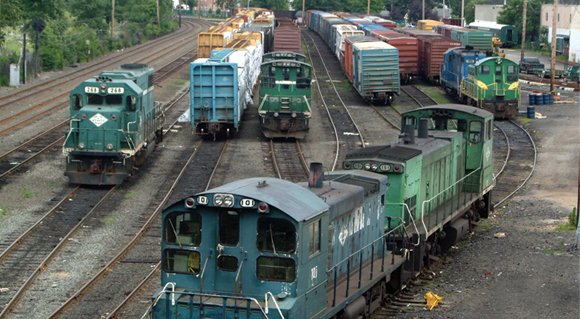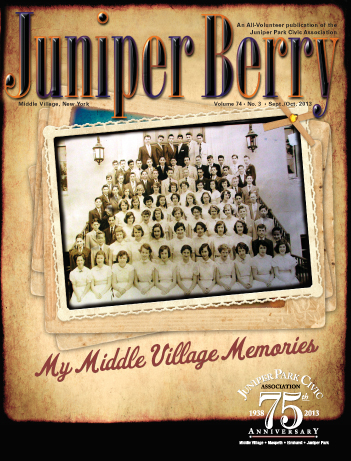The NYCR was designed primarily as a bridge route connecting the northeast with the southwest, providing a continuous rail route across the metropolitan area. This includes the 0.9-mile branch to access Sunnyside Yard that operates into Penn Station via the Hell Gate Route.
In 1997 the LIRR was relieved of its failing freight business. It was taken over by the New York & Atlantic (NY&A) a subsidiary of the Anaconda Corporation that owns several small railroads.
Who is who at Fresh Pond Junction today?
CSX Transportation
LIRR (Long Island Railroad)
Conrail (Shared assets)
Providence & Worchester Railroad
New York & Atlantic Railway (NYA)
Bill Thom email: ef3thom@verizon.net
But, railroads were no longer king, and the NYCR found it increasingly difficult to compete with other modes of transportation. The once proud Pennsylvania and New York Central railroads collapsed and were merged into Penn Central, itself a product of large-scale consolidation in 1968. This had an immediate effect on the NYCR when the New Haven was folded into the Penn-Central in January 1969. Of course, passenger service via the Hell Gate Route continued unabated under Amtrak, created in 1971.
The freight line to Fresh Pond and Bay Ridge was another matter. Freight traffic continued to decline through the 1960s and 1970s, as did the quality of the Long Island Railroad’s support for freight operations.
Transportation planners soon recognized that Oak Point Yard and Fresh Pond Junction were vital for plans to reduce truck traffic around the City and out to eastern Long Island. As a result facilities to support freight operations have been upgraded in Bay Ridge (Car float operations to Greenville New Jersey) and in the south Bronx (the 1.9 Mile Oak Point Link).
The principal interchange point for the NY Connecting remains Fresh Pond Junction. While overhead traffic was historically brisk, freight cars were exchanged with the LIRR for delivery to consignees out east on Long Island. In more recent years this exchange has been with the NY&A instead of the LIRR.
Delivering the goods to FP today is CSX Transportation (CSX-T) who was awarded the property when Conrail was broken up. Its assets were divided between CSX-T and the Norfolk Southern. They are the two largest railroads in the eastern half of the nation.
Today the NYCR is very much a survivor. The Connecting remains an integral cog in the wheel to reduce truck traffic in the City as well as eastern Long Island.
Distant air horns announce the approach of a NYA freight train. As most of the LIRR’s electric commuter fleet sleeps after dark, the night comes alive with the sounds of the NYA’s Diesel locomotives slamming through grade crossings at speed. Meanwhile, a brace of two or three CSX-T Diesel locomotives idle away the hours before their departure north for the Hell Gate, Oak Point, and beyond.
Needless to say, the future of freight rail operations appears secure.
See also, “The New York Connecting Railroad, Long Island’s Other Railroad,” published by the Long Island Sunrise Trail chapter of the National Railroad Historical Society, co-authored by Robert C. Sturm and William G. Thom.




